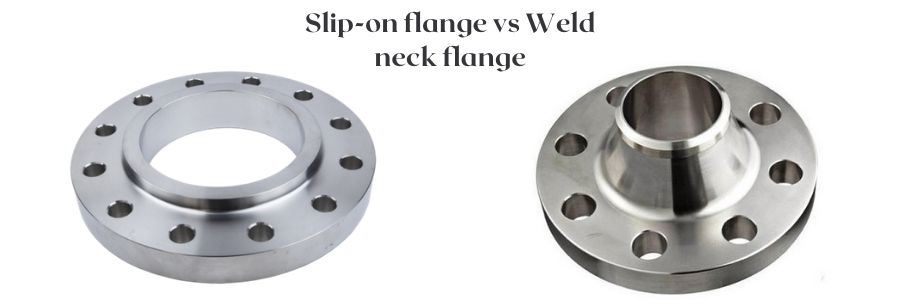Flanges are essential components of plumbing systems, ensuring tight connections between pipes, valves, and other equipment. Weld neck flanges and slip-on flanges are two of the most popular flange types in industries like as oil and gas, petrochemicals, power plants, and water treatment. While they both fulfill comparable functions, their design, application, and performance vary greatly.
At Newzel Industries, we specialize in making and providing high-quality flanges for a variety of industrial applications. In this tutorial, we’ll compare weld neck flanges vs slip on flanges to help you decide which is ideal for your project.
1. What is a weld neck flange?
A weld neck flange (WN flange) has a long, tapered hub that provides superior reinforcing and stress distribution in high-pressure and high-temperature applications. It is meant to be butt-welded to the pipe, resulting in a strong and leak-free connection.
Key Features of Weld Neck Flanges:
Long, tapered hub improves stress distribution.
Installation requires butt-welding. Suitable for environments with high pressure and temperature.
Reduces turbulence and minimizes erosion
Suitable for critical applications in industries like oil & gas, petrochemicals, and power plants
Advantages of Weld Neck Flanges:
– Superior strength and durability
– High resistance to thermal expansion and mechanical stress
– Full penetration welding ensures leak-proof connections
– Reduced danger of failure in harsh situations.
Disadvantages of Weld Neck Flanges:
Higher installation costs owing to welding and professional personnel needs.
Needs more space for installation than other flange kinds.
2. What is a slip-on flange?
A slip-on flange (SO flange) is designed to slide over the pipe and is welded both inside and outside to ensure a strong connection. It is a low-cost alternative to weld neck flanges that is commonly used in low-pressure, moderate-temperature applications.
Key Features of Slip-On Flanges:
Slides over the pipe before welding.
Needs fillet welds on both the inner and exterior sides.
Compared to weld neck flanges, installation is easier and faster.
Suitable for low to medium pressure and temperature applications.
Advantages of Slip-On Flanges:
✔ Lower cost and easier installation
✔ Requires less precision in pipe cutting
✔ Ideal for non-critical applications where high strength isn’t required
Disadvantages of Slip-On Flanges:
Weaker than weld neck flanges under high pressure.
Fillet welds increase the risk of leaking.
Not suitable for high-stress settings.
3. Weld Neck Flange vs Slip On Flange: Key Differences
| Feature | Weld Neck Flange | Slip-On Flange |
| Design | Long, tapered hub | Slides over the pipe |
| Installation | Butt-welded | Fillet-welded (inside & outside) |
| Strength | High | Moderate |
| Leakage Resistance | Excellent | Moderate |
| Pressure Handling | High | Low to moderate |
| Temperature Suitability | High | Moderate |
| Cost | Expensive | Affordable |
| Application | Critical industries (oil & gas, power plants) | General industrial use, water pipelines |
4. When to Use Weld Neck Flanges?
Weld neck flanges are recommended for:
✅ High-pressure pipelines
✅ High-temperature applications
✅ Critical and hazardous fluid transport
✅ Systems requiring superior durability and safety
5. When to Use Slip-On Flanges?
Slip-on flanges are suitable for:
✅ Low-pressure and moderate-temperature systems
✅ General industrial applications
✅ Water treatment and HVAC systems
✅ Situations where cost savings and ease of installation are priorities
Conclusion
Both weld neck flanges and slip-on flanges play important roles in pipe systems, but their usefulness is determined on the specific application. Weld neck flanges have higher strength, endurance, and leak resistance, making them excellent for high-pressure settings. Slip-on flanges, on the other hand, are less expensive and easier to install, making them ideal for applications with low to moderate pressures.
To fulfill your industry’s needs, Newzel Industries provides a diverse assortment of weld neck and slip-on flanges in a variety of materials and sizes. Contact us today for high-quality flanges at cheap costs!


